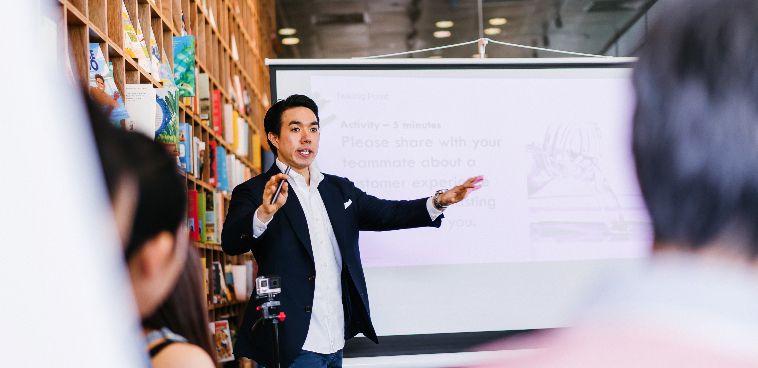In this, the first post of a series, we’ll introduce four simple steps that can help you crack the presentation code, ensuring your audience is informed and engaged, and your message clear and concise.
I work with business leaders to help them prepare to deliver high-stakes presentations. Whether for an analyst meeting, industry event or annual sales convention, these executives have something major on the line, and achieving big results is paramount.
If you’re facing a high-stakes presentation of your own, you may wonder what makes some presentations absolutely brilliant and others just OK. To achieve your endgame, try my four-step process and crack the C.O.D.E. — clarify, organize, develop and express/engage — of presentation excellence.
Step 1: Clarify your core message
The objective of Step 1 is to answer the question of what: “What does my audience need to know?” The answer to this question needs to be a simple declarative statement summarizing the essence of your presentation. This becomes your core message, and it should be so simple and clearly stated that every person who listens to your presentation can repeat it — thus providing sure proof that they got it.
Preparing to speak to a group of investment bankers, a holistic nutritionist developed a clever core message: “Everything you eat contributes to your bottom line.” This core message had a high sticky factor because it was clear, direct, and easy to recall and repeat.
Step 2: Organize your content
Step 2 answers the question how: “How am I going to amplify my core message in a way that will make sense to my audience?” You do this by grouping your content into digestible bits of information with a logical structure, making sure everything maps back to the core message.
During a daylong marketing workshop I attended, the speaker shared a laundry list of 33 marketing tools. Valuable information, but halfway through I was utterly exhausted trying to follow along. Simply grouping these techniques into “chunks” — in-person, print and digital, for example — would have given the audience a structure to grasp what was being discussed.
Step 3: Develop your media
Once you’ve clarified and organized your content, it’s time to consider whether to incorporate any media and, if so, the best way to do it. When done right, your media — whether slides, video or flipcharts — supports rather than overpowers your presentation, which allows your audience to learn more in less time.
Step 4: Express yourself and engage your audience
In Step 4, your goal is to succeed at being you. Too many presenters create a facade or try to imitate someone else rather than simply expressing their own authentic self. Worse, they disconnect and steamroll ahead in an effort to “just get through it.”
Authentic delivery requires alignment between your message and your delivery of it. The best presenters get everything working together — their words, body language, facial expression and voice, as well as the slides, props or other media support. When you express your best self, you’ll find that your audience not only gets the message, but they’ll also want to engage with you in Q&A.
A well-executed Q&A session is one of the most valuable forms of audience engagement. Q&A provides listeners the opportunity to get their questions answered, learn more about the topic as it relates to their circumstances and share their own insights or perspectives. Simply put, Q&A is an extension of your presentation, turning it into a two-way conversation.
C.O.D.E. is an iterative process
Although the C.O.D.E. process is described as linear, it is actually an iterative process. Here’s what often happens: You start with Organize, sorting through all the information you gathered. Then you realize you need to narrow down the message, so you go to Clarify. You come back to Organize, make progress and move on to Develop, but there you find you need to return to Clarify again.
Eventually you get to Express and Engage — and even then, you may backtrack once or twice. Don’t let this iteration throw you. It is completely normal and expected. I promise, you will reach the end.
Intrigued? Be on the lookout for my second post in this series, where we’ll discuss the finer points of your core message, the very foundation of every successful presentation. Not sure you’ve found your core message? I’ll share the three signs you’ve hit the mark.
Stephanie Scotti coaches leaders and their teams for every type of presentation, from Fortune 500 CEO keynotes to TED Talks to multimillion-dollar pitches. Find her bestselling book “Talk on Water: Attaining the Mindset for Powerhouse Presentations” at Professionally Speaking Consulting.
If you enjoyed this article, sign up for SmartBrief’s free e-mail on leadership, among SmartBrief’s more than 200 industry-focused newsletters.
